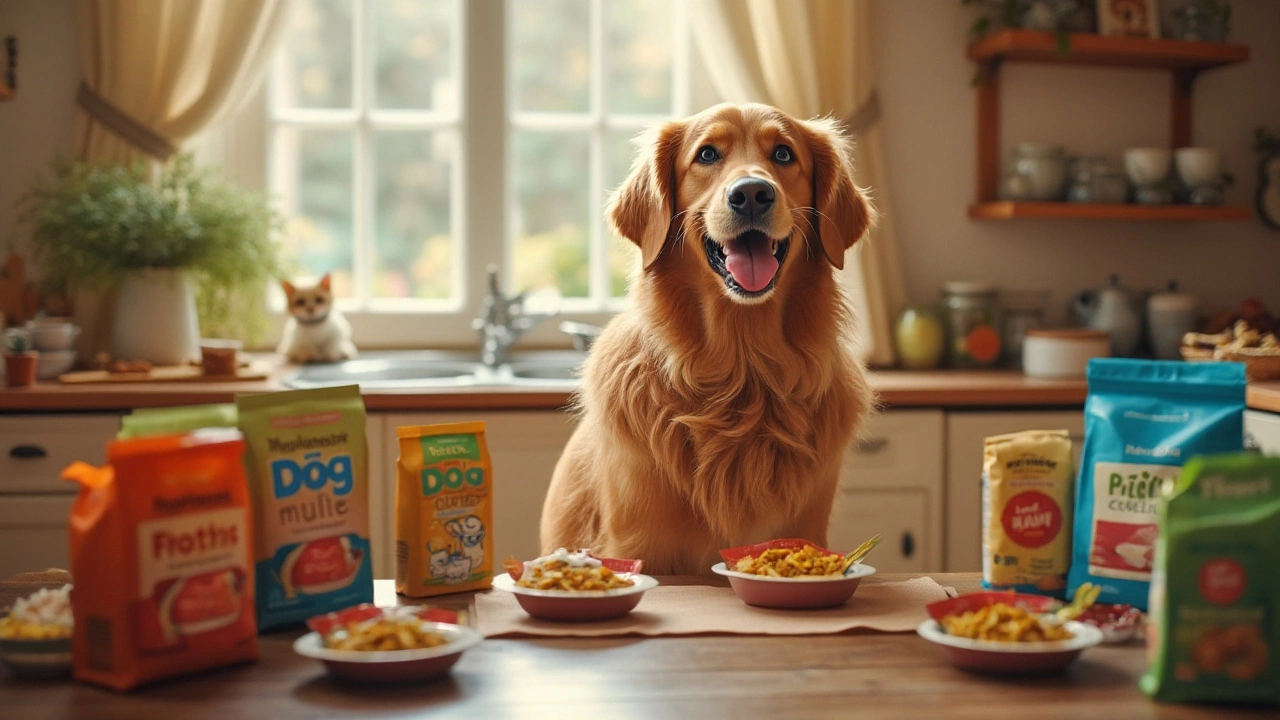Top Dog Food: How to Pick the Best Bowl for Your Pup
Choosing dog food can feel like guessing at a grocery aisle. You want something tasty, healthy, and affordable, but the shelves are crowded with claims and buzzwords. Below we break down the real factors that separate the good stuff from the hype, so you can shop with confidence.
First, check the protein source. Real meat (chicken, beef, lamb, fish) should be the first ingredient. If you see "meat meal" or "animal digest" far down the list, the protein quality is low. High‑quality foods use named meat and keep fillers like corn or wheat to a minimum.
Second, look at the fat content. Fat isn’t the enemy – it fuels energy and supports a shiny coat. A balanced diet typically has 8‑12% fat for adult dogs; puppies need a bit more. Avoid foods that list too many oils or butter, which can be cheap fillers.
Third, mind the carbs. Dogs can digest carbs, but they don’t need them in huge amounts. Sweet potatoes, peas, and lentils are better than grain‑heavy corn or rice. If your dog has allergies, a grain‑free or limited‑ingredient formula can reduce itchy skin and digestive upset.
Reading Labels: What the Fine Print Means
Every bag has a guaranteed analysis – protein, fat, fiber, and moisture levels. For an adult dog, aim for 22‑30% protein and 8‑12% fat. Fiber helps with digestion, so 3‑5% is a good range. Moisture is higher in wet food (about 70‑80%) and lower in dry kibble (around 10%).
Watch out for artificial additives. Preservatives like BHA, BHT, and ethoxyquin are controversial; many owners prefer natural options like mixed tocopherols or rosemary extract. Colorings and flavor enhancers are also unnecessary.
Practical Buying Tips
Buy in bulk only if you’re sure the food suits your dog – freshness matters. Rotate brands every few months to avoid nutrient gaps and keep your pup interested. When trying a new brand, start with a small bag and monitor energy levels, stool quality, and coat health.Price per kilogram is a better comparison than the sticker price. High‑cost brands aren’t always better, but extremely cheap foods often cut corners on protein and additives. Look for a balance of quality ingredients and fair pricing.
Finally, store kibble in an airtight container away from sunlight to keep fats from turning rancid. Wet food should be refrigerated after opening and used within a few days.
With these pointers, you can cut through the marketing noise and choose a top dog food that keeps your companion healthy, happy, and ready for the next walk.
Posted By Bryndle Redding On 9 Dec 2024 Comments (0)
Top Dog Food Brands: A Guide to the Best Choices for Your Canine Companion
Choosing the right dog food for your furry friend can be a daunting task given the multitude of options available. This article delves into the top three dog food brands that consistently rank high in quality and nutrition. Learn what makes these brands stand out in terms of ingredients, preparation, and dog health benefits. With this guidance, picking the right food will become a simpler, more informed process. Explore the best options to keep your canine healthy and happy.
READ MORE